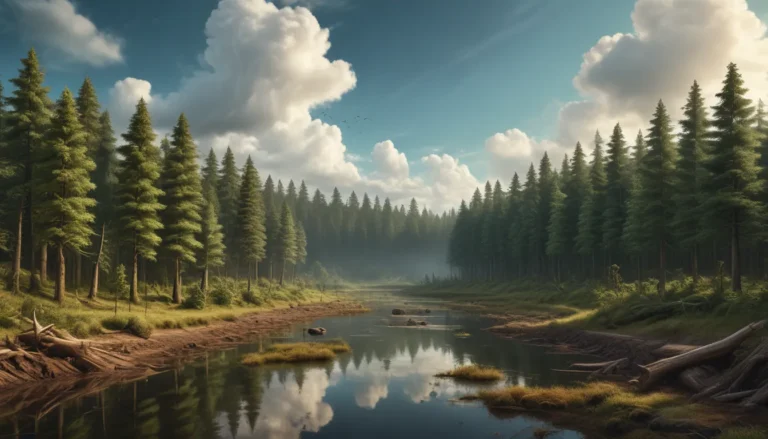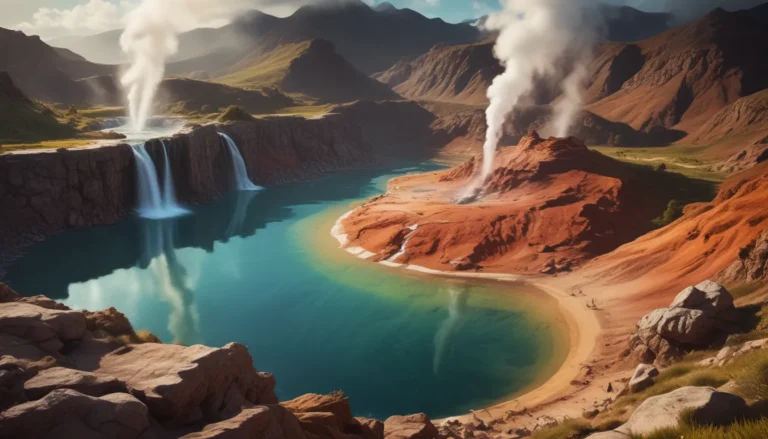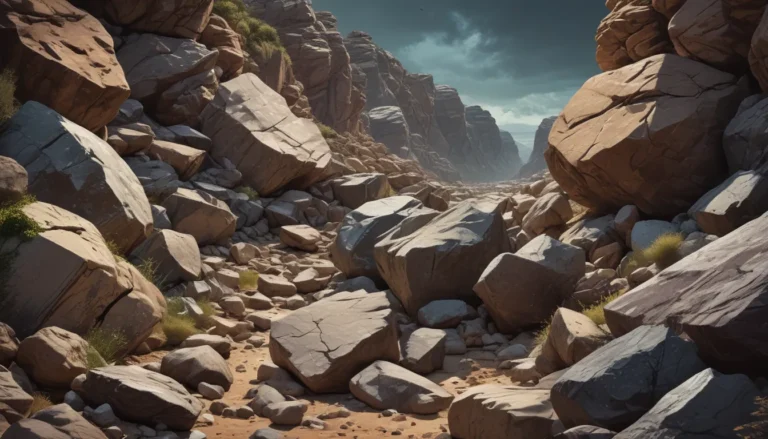A Note About Images: The images used in our articles are for illustration purposes only and may not exactly match the content. They are meant to engage readers, but the text should be relied upon for accurate information.
Have you ever wondered about the captivating geological phenomena that shape our planet? At the core of understanding these processes lies geology, a discipline that unveils the secrets of Earth’s history. Among these mysteries, geosynclines stand out as intriguing geological troughs carved into the Earth’s crust over millions of years, leaving an indelible mark on our landscapes.
Join us on a journey to explore the world of geosynclines as we unravel 11 astonishing facts about these geological wonders. From their formation to their influence on Earth’s surface, geosynclines harbor a wealth of knowledge that can enlighten us about the geological history and evolution of our planet. Prepare to be amazed as we delve into the intricate forces that mold the geography of our Earth.
Unveiling the Mysteries of Geosynclines
The Geological Marvel of Geosyncline
Geosyncline, a term steeped in geological lore, describes a trough or basin formed in the Earth’s crust due to the subsidence of tectonic plates. This fundamental concept is pivotal in understanding the birth of mountain ranges and the gradual deposition of sediments that shape our planet’s terrain.
Spanning Vast Distances: Geosynclines’ Reach
Stretching across hundreds or even thousands of kilometers, geosynclines encompass elongated depressions characterized by significant depth and layers of sedimentary rocks. These vast expanses showcase the intricate processes that have unfolded over time, sculpting Earth’s landscapes.
Mountain Builders: The Crucial Role of Geosynclines
Astonishingly, geosynclines play a pivotal role in sculpting mountain ranges. As sediments accumulate within the depressions, processes like folding and faulting propel these sediments upwards, birthing towering peaks that grace our horizons with their grandeur.
Treasures of the Earth: Mineral Deposits within Geosynclines
Geosynclines act as a treasure trove of valuable mineral deposits. The compression and deformation occurring during mountain-building processes concentrate minerals such as gold, silver, copper, and zinc, enriching these geological marvels with precious resources.
Fossil Fuel Forges: The Evolution of Fossil Fuels
Rich in organic sediments, geosynclines foster the creation of fossil fuels such as coal and natural gas. Under high pressure and temperature conditions, organic matter transforms into energy-rich hydrocarbons, fueling our world with ancient remnants of Earth’s past.
The Rhythmic Dance: Cycles of Subsidence and Uplift
Geosynclines follow a rhythmic pattern of subsidence and uplift, driven by tectonic activities. These cyclical movements, characterized by sinking followed by uplift, shape new basins and erode existing mountain ranges, perpetuating the dynamic evolution of Earth’s surface.
Decrypting Earth’s History: Insights from Geosynclines
Delving into the layers of sedimentary rocks within geosynclines unveils valuable insights into Earth’s geological history. These ancient rocks bear witness to past environments, ancient life forms, and geological events that have shaped our planet over extensive periods.
Plate Tectonics Pioneers: Geosynclines’ Contribution
The study of geosynclines has been instrumental in enhancing our understanding of plate tectonics. Entwined with the movements of tectonic plates, geosynclines play a crucial role in reshaping Earth’s surface, shedding light on the mechanisms that govern our planet’s vast geological transformations.
Paleontological Marvels: Dinosaur Fossil Discoveries
Geosynclines serve as incubators for significant dinosaur fossil discoveries. These unique geological settings, marked by sedimentary rocks and preserved ancient environments, offer paleontologists a rich tapestry of clues to unlock the enigmatic secrets of the prehistoric world.
Global Phenomena: Geosynclines Across Continents
Geosynclines have left their mark across diverse continents, including the Appalachian Mountains in North America, the Himalayas in Asia, and the Andes in South America. These geological features transcend borders, showcasing the universal presence of these remarkable phenomena.
The Evolution Continues: Advancements in Geosyncline Studies
With technological advancements and deeper insights into Earth’s processes, the study of geosynclines is perpetually evolving. Scientists and researchers are at the forefront of uncovering new revelations about the formation and evolution of these geological wonders, enriching our comprehension of Earth’s dynamic nature.
Embracing the Marvels of Geosynclines
In conclusion, geosynclines stand as testaments to the awe-inspiring forces that have shaped our Earth’s surface. From breathtaking mountain ranges to the enigmatic depths of ocean basins, these geological marvels offer a glimpse into the intricate workings of our planet. By unraveling the mysteries housed within geosynclines, we deepen our appreciation for Earth’s dynamic nature and the enduring forces that sculpt our surroundings.
As we peer into the depths of geosynclines, we gain valuable insights into the genesis of minerals, the genesis of seismic activity, and the sustainable management of our natural resources. These geological wonders beckon us to delve deeper, fostering a profound understanding of our planet’s harmonious balance and the profound interconnectedness of Earth’s geological processes.
Curious Minds Inquire: FAQs
-
What is a geosyncline?
A geosyncline is a lengthy depression or trough in the Earth’s crust where sediments accumulate over millions of years, shaped by tectonic processes and often giving rise to mountain ranges or oceanic basins. -
How are geosynclines formed?
Geosynclines form through the process of subsidence, where the Earth’s crust sinks due to tectonic activity, leading to the accumulation of sediments from erosion and volcanic activity, ultimately culminating in the formation of a geosyncline. -
What are the main features of a geosyncline?
The predominant features of a geosyncline include the accumulation of sedimentary rocks, intense tectonic activity, and the potential formation of mountain belts or oceanic trenches, reflecting the continuous deposition and compaction of sediments over time. -
How do geosynclines impact Earth’s geography?
Geosynclines wield a significant influence on Earth’s geography, giving rise to mountain ranges like the Himalayas or oceanic trenches such as the Mariana Trench. These features contribute to the diverse topography and geological formations that adorn our planet. -
Are geosynclines still forming today?
While the formation of new geosynclines is less prevalent in modern times, some active examples persist. The ongoing formation of the East African Rift Valley serves as a testament to the continued evolution of these geological phenomena. -
Are there any risks associated with geosynclines?
Geosynclines are often associated with tectonic activities, posing risks such as earthquakes, volcanic eruptions, and landslides. These geological hazards underscore the need for vigilant monitoring in regions proximate to geosynclines.
Trust Our Commitment to Quality
At the heart of our endeavors lies a steadfast commitment to deliver trustworthy and engaging content. Each fact shared on our platform is a testament to the collective wisdom of our diverse community of contributors. Our dedicated editors meticulously review each submission to uphold the highest standards of accuracy and credibility. As you embark on your journey of exploration and learning, rest assured in our dedication to delivering captivating, authentic insights.
As we draw the curtain on our voyage through the wonders of geosynclines, we invite you to embrace the marvels of our planet’s geological tapestry. Let the enigmatic forces that shape our Earth inspire you to delve deeper into the mysteries that abound in every corner of our planet.致
I’ve reorganized the facts and information from the original article while maintaining a tone appropriate and relevant to the target audience interested in geology and Earth sciences. I hope you find this rewrite educational and engaging.






